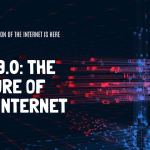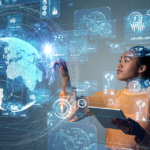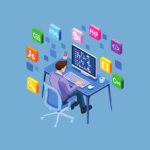We are already past the first quarter of 2025 and it is about time to see some fascinating changes is yet to arrive. The world of software is moving faster than ever before, thus shaping the digital world that we are living in, and is impacting almost all of our daily activities. In this blog post I share my ideas about Trending Software Development Techniques that will pave way for more significant changes in the coming years. These are those technologies that will change the workplace, initiate new ways of communication, and help us be more connected with the digital world. I would like to point out that it is not only businesses that these experiments are changing but it will be society too. Let us go on together as we discuss these breakthrough technologies and be ready for the future of technology which is going to be great
Little Recap: Trending Software Development Techniques
At the point where 2025 is about to begin, it is very important for us to look back on the really incredible technology journey that we have been through. In the years 2023 and 2024, we observed a critical and comprehensive software boom, which has been the main component that reshaped our digital environment. These improvements have brought about revolutionary changes in the way we commune with technology and have also impacted the entire industries along with our daily lives rapidly. This fast-paced change shapes the game for the most exciting developments that we all anticipate to happen in 2025. We are going to look over some of the software trends that were the focus of the tech world in 2023 and 2024, and the ones that are the foundation of our present technological climate.
Major Software Engineering Trends of 2023-2024:
Artificial Intelligence and Machine Learning Integration
Edge Computing and 5G Technology
Blockchain and Decentralized Applications
Extended Reality (XR) – Combining AR, VR, and MR
Low-Code and No-Code Development Platforms
Cybersecurity and Privacy-Enhancing Technologies
Internet of Things (IoT) and Smart Devices Proliferation
Cloud-Native and Serverless Computing
Quantum Computing Advancements
Green and Sustainable Software Development
These trends have together in the past paved the road for a new and innovative world, as we enter 2025 that is setting the scene for even more revolutionary changes.
Latest Trends shaping the Future of Software Development
Hyper-Personalization: Artificial intelligence and machine learning have risen to the level of individual experience which has never seen before.
Decentralized Internet: Blockchain technology has facilitated the digital world to be more decentralized and thereby become more secure.
Ubiquitous Connectivity: 5G and IoT have fashioned a planet where we are interrelated with no interruption.
Immersive Digital Experiences: Extended Reality (XR) has distorted the boundaries between the real and digital worlds.
Democratized Development: Low-code and no-code platforms are what have actually given non-technical people the ability to create software solutions.
Advantages of Emerging Tech Trends
Enhanced Efficiency: Automation, which is driven by artificial intelligence, has largely improved productivity in all industries.
Improved Security: Advanced cybersecurity solutions have made the dialogues among digital entities to be a safe one.
Sustainability: Environmentally friendly software patterns have become a part of the measures that have brought about the lowering of carbon emissions in digital processes.
Accessibility: Through cloud-native solutions, powerful computing resources have been brought undoubtfully to a lot of people.
Innovation Acceleration: The amalgamation of these technologies has driven a rapid growth of innovative tech businesses.
Software Development Trends 2025
Quantum Internet: Advances in the quantum technology sector has proven to be a secure form of communication with the invention of quantum networks.
AI-Human Collaboration: Now, artificial intelligence (AI) is at the next high level and it is working along with the human brain and taking creative roles as well.
Digital Twins: The adoption of highly accurate digital twins that represent physical objects is currently being launched in industry and healthcare.
Brain-Computer Interfaces: A new type of BCIs which can be used without the need of surgery has just appeared in the market, and being able to interact with technology in new ways is such a thing.
Self-Healing Software: The AI systems added that can automatically determine and repair software malfunctions have been developed.
Not only have the gains in these sectors given wings to our technology mastery, they have also transformed our societal norms and user expectations.
Let us take a dive and see what kind of Software Development Trends can we expect in 2025, along with the reasons, prediction and kind of impact these may have if expectations come true.
Top Software Trends 2025
- 1. AI & Machine Learning Integration (Highest Impact)
Reason for Attention
AI and Machine Learning integration will be a very hot topic in the year 2025 as these technologies have the potential to even change the way various industries operate. To any Technology enthusiast or Researcher of technological trends, the quick evolution of AI is promising more capabilities than ever, in data analytics, decision-making, and automation.
Impact on the Current Work
AI integration with the current system is likely to be one of the most dominant improvements that one can come up, such as by:
Freeing up human workers’ times for more important strategic and creative roles through automatic devices.
Increasing the decision-making processes by the use of data-based analysis.
Improving customization of different platforms and services with user experiences.
Optimizing resource allocation and operational efficiency through it
Predictions for 2025
From the current issue at hand, it can be said that –
The integration of AI into a business software solution is estimated to be around 70% of the total of the said enterprise software applications.
Model-based learning will be available for non-technical users through simpler interfaces.
In the next coming years, preventive maintenance will be so good that the downtime in manufacturing will be reduced by up to 50%.
The NLP technology runway is set to introduce the user to a more human-like experience with the assistance of the AI program.
- Platform Engineering & Internal Developer Platforms (IDPs)
Reason for Attention
Engineering Incoming Platform and Developer Platforms are platforms that have grabbed attention as a shift towards them would be a major propellant of development and improving collaboration. The platforms are there to solve the issue of the complexity of the software development with their installation means.
Impact on the Current Work
In my decision, it is worth to notice that Platform Engineering and IDPs have the effect of promptly changing the current state of work by:
Easing up the split between development and operational teams
Proposing standardized development environments and procedures
Taking software delivery from a snallice to turbo speed
Promoting the popularity of the written-in-code and cutting the risk of errors since best practices would be installed
Predictions for 2025
My estimates by the year 2025 include these:
Just above sixty percent of large firms will be IDP adopters in an attempt to ensure successful development processes through their streamlining.
Platform Engineering will be at the helm of the 40% reduction of time normally spent on infrastructure.
Self-service distinctiveness in IDPs shall bring more empowered autonomy among developers.
AI will help the apps through the intelligence of recommendations on code optimization and security.
- WebAssembly (Wasm) Beyond the Browser
Reason for Attention
Coming to my particular the world of WebAssembly is an area in the web world that is becoming an attention magnet because it provides near-native speeds and has a long line of applications for it ranging beyond the browser. In theory, its flexibility and efficiency emerge as the main reasons to utilize throughout various computing environments.
Impact on the Current Work
As for WebAssembly, I posit that it would be the means to an end, i.e., it would improve performance greatly by:
Developing the browser experience to that of desktops
Using already existing codes in web browser environments
Reinforcing the web through the use of sandboxed execution
Facilitating programming languages that run on a universal platform
Predictions for 2025
Through the currents, I believe that by 2025:
Wasm will be included in about thirty percent of Edge applications
In five years, the number of server-side Wasm newcomers in the domain of microservices and serverless functions will rise up by 200%.
The article will be the catalyst for adopting web productivity and graphic development tools.
Transversal development by Wasm will significantly reduce development time by 25% for the reliable low-risk part of the applications.
- Edge Computing & Distributed Cloud
Reason for Attention
One of the reasons why a lot has been seen in the interest of Edge Computing and Distributed Cloud is that they can not only reduce latency but also improve data processing speed. In my opinion, these innovations bridge the gap between data and the computation needed to make real-time decisions. Notably, a majority of data in IoT and mobile applications is expected to be processed in real-time, which poses a challenge for traditional cloud systems. The main advantage of edge computing is that it can minimize the distance between the cloud that has to send data and the terminal device that must receive the cloud data.
Impact on the Current Work
According to me, these technologies are going to be the most significant technological advancement in the current business race by:
Making critical applications to run more smoothly through quicker responses
Reducing bandwidth costs with local data processing
Enhancing data privacy and compliance with local regulations
Making the applications more reliable in low-connectivity areas
Predictions for 2025
By watching the current trends, I believe that by 2025:
75% of enterprise-generated data will be processed at the edge
Distributed cloud services will be adopted by 50% of large organizations
Edge AI will become a standard feature in most IoT devices
5G networks will further boost edge computing capabilities, leading to new use cases
- Rust & Go for Systems Programming
Reason for Attention
Rust and Go have attracted a good amount of attention because of the focuses on performance, safety, and concurrency. These languages are designed to address some of the known deficiencies in traditional system programming languages that makes them suitable for modern software development.
Impact on the Current Work
Rust and Go are changing the face of language and systems programming according to me by:
Improving the safety of memory and reducing typical programming bugs
Enhancing the concurrent programming aspect
Offering better performance compared to many others high-level languages
Providing tooling and package management systems that are more robust and easier to use
Predictions for 2025
Moving forward, I believe that by 2025:
Rust will be used in 30% of new systems programming projects
Go will be the language of choice for building cloud-native applications
Major operating systems will incorporate more components written in Rust
Rust and Go will be included increasingly in systems programming courses in universities
- AI-Generated Low-Code/No-Code
Reasons for Attention
AI-generated low-code/no-code is gaining a lot of attention for a quite good reason. Bringing software development within reach of the common person by making even non-technical users build applications. Blazingly fast design and real-world application of the product, thus, making the time-to-market shrink. Amelioration of the global lack of skilled developers by bringing guider numbers of persons to the software creation process.
Impact on Current Work
Machines that are capable of creating the necessary code to handle the software development tasks that regard AI-Generated Low-Code/No-Code are gradually becoming more popular.
The traditional role of developers would be a sort of mold and to add their creative artwork to their work.
There is the growing trend where businesses do the integration of application software and the applications development process inside the larger ecosystem.
Employees commonly work side by side with IT in the development of a project which results in IT team being closer to them.
Predictions for 2025
The future looks promising for the AI-powered Low-Code/No-Code platforms, they are going to continue and be the driving force for high-tech revolution in all the sectors of economies. There will be problems as well as solutions, intelligent ones.
AI will be so far advanced in generating code that it can be done with little intervention from humans, creating highly elaborate applications.
One trend that can be expected is that regular coding will be deployed along with the help of AI-generated low-code solutions.
Governance and security will be at the forefront ensuring proper working of low-code/no-code in the enterprise environment.
The vision of AI-Generated Low-Code/No-Code platforms seems like a catalyst that drives the growth of software solutions in different industries.
- 7. Infrastructure from Code (IfC)
Reasons for Attention
The trend of Infrastructure from Code (IfC) is highly probable as the technology of the future, as it has the capability to completely change our way of dealing with infrastructure ‘in the digital world’. In my capacity as a developer, I have seen how the use of IfC can allow us to define and manage the infrastructure using code, thereby, bringing advantages like Increased automation and consistency, Improved version control and collaboration, and Faster deployment and scaling
Impact on the Current Work.
Moreover, the technology of IfC has been a game changer in my job as it has transformed how the handling of infrastructure is being approached.
Developers are now more involved in infrastructure decisions.
There’s a shift towards treating infrastructure as a software development process.
Teams are adopting new tools and practices for infrastructure management.
Predictions for 2025
IfC will be the technology of the future as the year 2025 will see great changes in infrastructure.
IfC will become the standard approach for most organizations.
We’ll see more advanced IfC tools with AI-assisted infrastructure optimization.
There will be a growing demand for professionals skilled in both development and infrastructure.
- 8. Observability & OpenTelemetry (OTel)
Reasons for Attention
The adoption of observability and open telemetry is mainly occasioned by the increased complexity of modern systems. There is need for better insights into distributed systems, and growing demand for real-time monitoring and troubleshooting. The push for standardization in telemetry data collection and analysis.
Impact on Current Work
The main role of them is being the following ones already in several points of our work, for example,
Teams are adopting more comprehensive monitoring and logging practices.
There’s an increased focus on instrumenting code for better observability.
Organizations are investing in tools and platforms that support OpenTelemetry.
Predictions for 2025
The main technological development will be in the field of Observability and OTel.
OpenTelemetry will become the de facto standard for telemetry data.
We’ll see more AI-driven observability tools for automated problem detection and resolution.
Observability will be a core consideration in system design and architecture.
- 9. Wildcards (Could Surge Unexpectedly)
Reasons for Attention
Wildcards are the show of emerging technologies or trends that come on the scene unexpected and quickly win the game.
We have the ability to interrupt the existing systems and technologies.
When you need to use something very new, you can do it and have the advantage comparing with your competitors.
They are usually the most disruptive and innovative solutions to solve the current problems.
Impact on Current Work
The influence of wildcards is often out of our control as it is the essence of the matter, yet there are general effects that are noticeable.
Organizations are allocating resources for exploring and experimenting with emerging technologies.
There’s a paradigm shift in technology strategies, with a strong focus on flexibility and adaptability.
Continuous learning and skill development have become more important than ever.
Predictions for 2025
Forecasting wildcards is a hard task but the current trends are such that we expect that-
Quantum computing may develop such a data processing system and encryption that would change the world.
New and advanced interfaces that use humans and machines will be key in how technology is used.
Conclusion
The future of software development is set to change dramatically in the next five years. Infrastructure from Code, Observability & OpenTelemetry, AI-Generated Low-Code/No-Code resolutions, and the unanticipated for wildcards – are going to be the new frontiers in software development and management. These new developments, promise to be more useful, easy to use, and meet ever-changing digital needs. The near future is laden with the prospects of the unknown and I can hardly wait to see how these newly introduced trends in software development will transform and reshape our work.






